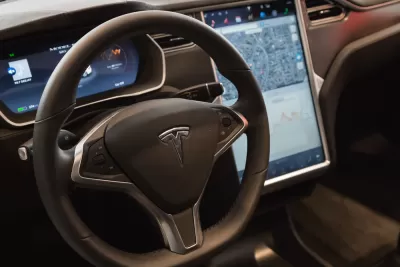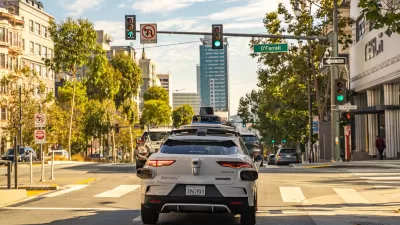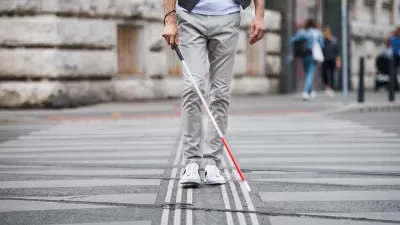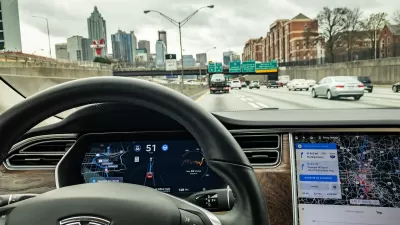Some Tesla autonomous modes direct the vehicle to engage in dangerous and illegal behaviors, prompting calls for increased regulation of autonomous vehicle tech.

According to an article by Streetsblog's Kea Wilson, Tesla is equipping its vehicles with a feature that lets drivers choose "how aggressively the vehicle applies many of its automated safety features on U.S. roads," essentially allowing the car to break common traffic laws under its "assertive" driving mode.
The rollout went largely unnoticed by street safety advocates until a Jan. 9 article in The Verge, when journalist Emma Roth revealed that putting a Tesla in 'assertive' mode will effectively direct the car to tailgate other motorists, perform unsafe passing maneuvers, and roll through certain stops ('average' mode isn’t much safer). All those behaviors are illegal in most U.S. states, and experts say there’s no reason why Tesla shouldn’t be required to program its vehicles to follow the local rules of the road, even when drivers travel between jurisdictions with varying safety standards.
The revelation concerns road safety advocates who say the company is endangering riders and pedestrians by allowing the cars to roll through stops and red lights. Wilson attributes this in large part to the fact that "by and large, U.S. law tends to favor penalizing individual drivers for breaking the law, rather than penalizing car manufacturers whose vehicle designs make breaking those laws easy," pointing to the lack of regulations for vehicles that can travel at speeds far beyond any legal speed limits.
Meanwhile, a complicated regulatory landscape puts autonomous vehicle technology in a challenging gray area, with some states attempting to pass laws that hold carmakers responsible for safety failures, while others are supporting more autonomous vehicle testing on their streets with statutes that shield manufacturers from liability.
FULL STORY: Why Tesla Can Program Its Cars to Break Road Safety Laws

Alabama: Trump Terminates Settlements for Black Communities Harmed By Raw Sewage
Trump deemed the landmark civil rights agreement “illegal DEI and environmental justice policy.”

Study: Maui’s Plan to Convert Vacation Rentals to Long-Term Housing Could Cause Nearly $1 Billion Economic Loss
The plan would reduce visitor accommodation by 25% resulting in 1,900 jobs lost.

Why Should We Subsidize Public Transportation?
Many public transit agencies face financial stress due to rising costs, declining fare revenue, and declining subsidies. Transit advocates must provide a strong business case for increasing public transit funding.

Paris Bike Boom Leads to Steep Drop in Air Pollution
The French city’s air quality has improved dramatically in the past 20 years, coinciding with a growth in cycling.

Why Housing Costs More to Build in California Than in Texas
Hard costs like labor and materials combined with ‘soft’ costs such as permitting make building in the San Francisco Bay Area almost three times as costly as in Texas cities.

San Diego County Sees a Rise in Urban Coyotes
San Diego County experiences a rise in urban coyotes, as sightings become prevalent throughout its urban neighbourhoods and surrounding areas.
Urban Design for Planners 1: Software Tools
This six-course series explores essential urban design concepts using open source software and equips planners with the tools they need to participate fully in the urban design process.
Planning for Universal Design
Learn the tools for implementing Universal Design in planning regulations.
Smith Gee Studio
Alamo Area Metropolitan Planning Organization
City of Santa Clarita
Institute for Housing and Urban Development Studies (IHS)
City of Grandview
Harvard GSD Executive Education
Toledo-Lucas County Plan Commissions
Salt Lake City
NYU Wagner Graduate School of Public Service





























